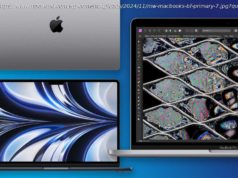Apple remembered enterprise users at the WWDC 2017 – in a big way
If there’s one annual event that makes Apple fans‘ man buns stand on end, it’s the Worldwide Developer Conference (WWDC) : the show for all things i.
This year’s event has just been held, and as well as the consumer releases there was plenty for business customers, too. Before the show, sources were widely predicting the announcement of new hardware and a refresh to Apple’s desktop and mobile operating systems. What we got was…well, pretty much in line with that, really.
Power to the desktop…
If you’re a serious Apple user, you’ll understand that a Macbook isn’t the most productive device on offer. For that, you need an iMac, and Apple refreshed the lineup at the WWDC.
The 21.5in (both regular and 4k models) and 27in (5k) iMacs have updated displays, going up to 500 cd/m² brightness: a 43 per cent increase. They are said to be the best iMac displays ever. Both models have 7 th -gen Kaby Lake processors from Intel, as well as more RAM: 32GB and 64GB, respectively.
Fusion drives will be fitted as standard on the 4k 21.5in and 27in models and – importantly – the higher-end models now have discrete graphics. Considering the size and resolution of the iMac’s screen, this really should have been standard from the get-go.
The 21.5in iMac will cost $1,100, or $1,300 for the 4k version. The 27in will start at $1,800.
Don’t actually use the iMac like this unless you hate your eyes
Apple will roll out a brand new iMac in December called the iMac Pro: featuring 8-, 10- or 18-core Intel Xeon processors, the computer will use Radeon Vega graphics, up to 128GB ECC memory and feature for USB-C (with Thunderbolt) ports. Apple says that the Pro will reach 11 TFLOPs of single precision compute power and can be used for 3D rendering and high frame rate (90 fps was thrown around) VR. For half precision computation, the desktop can reach 22 TFLOPs. It will cost a wallet-scorching $5,000.
…and the laptop…
Apple didn’t forget mobile customers, and announced Macbooks running the new macOS, High Sierra. There’s nothing too interesting about this version: developers can now access the GPU through an update to Apple’s Metal graphics suite, which also brings VR support; and there have been updates to Safari to include autoplay blocking and intelligent tracking protection. The new APFS filesystem (first seen at WWDC 2016) was also mentioned.
Information about the new laptops was thin on the ground; Apple simply said that the 12in Macbooks and 15in Macbook Pros will be updated to use Kaby Lake processors. Faster SSDs and improved graphics will also be installed.
…and the hand
Long present in the rumour mill, Apple made the 10.5in iPad Pro 2 official this year: but, thanks to slimmer bezels, it’s said to be the same size as the existing 9.7in version (we’ve seen smartphone developers like Samsung and Sony do this before) . A 12.5in model will also be available.
Apple has installed its A10X processor into the new tablet, increasing its power by roughly 30 per cent; storage has also been upgraded. Cameras now stand at 7MP (front) and 12MP (rear) .
The iPad Pro has some impressive display specs
Some interesting tweaks have been made to the display; for starters, like Apple’s Macs, it now supports the DCI-P3 gamut, which is commonly used in film production. Most LCD displays today use the sRGB gamut, but wide colour gamut screens (DCI-P3 or Rec.2020) are becoming more common. Brightness has been increased to 600 cd/m², and HDR video support has been added. The display has an extremely fast refresh rate of 120Hz; Apple says that a feature called ProMotion is responsible for the doubled refresh rate. ProMotion can also dynamically adjust the refresh based on what the user is doing.
A 64GB version of the iPad Pro will cost $650; it is available to order now and will begin to be shipped next week.
What about iOS?
We did say at the top that the WWDC is known for iOS news, and this year was no different. A host of updates is being rolled out for general use, including Siri updates, payments through iMessage and the storing of iMessages in the iCloud. Pro users will get a bit more, though.
iPad owners can use iOS 11 to run split-screen apps, dramatically improving productivity. Just like a Macbook, drag-and-drop is present to organise files and folders; and talking of that, a new app (dramatically named Files) is a management system that can be used to sort files by size and date.
One last thing…
Introduced in classic Apple fashion (i.e. as everyone was just about ready to leave) , the HomePod is Apple’s answer to Google Home and Amazon’s Echo. Although first billed as a consumer device, we wouldn’t be shocked to see the HomePod making its way to a business near you in the future.
As well as its obvious qualities as a smart speaker (Siri can tell you who a certain musician is in the song you’re listening to) , the device can be used to control other HomeKit devices; check the weather forecast; and listen to news briefings.
A note on privacy: the HomePod doesn’t start to receive any audio data until the user says, „Hey Siri, “ and the data that does get picked up is encrypted.
Apple will launch the HomePod in December in the UK, USA and Australia, for $350.
For all of the rest of the WWDC news, including the consumer side, visit our sister site The Inquirer .






